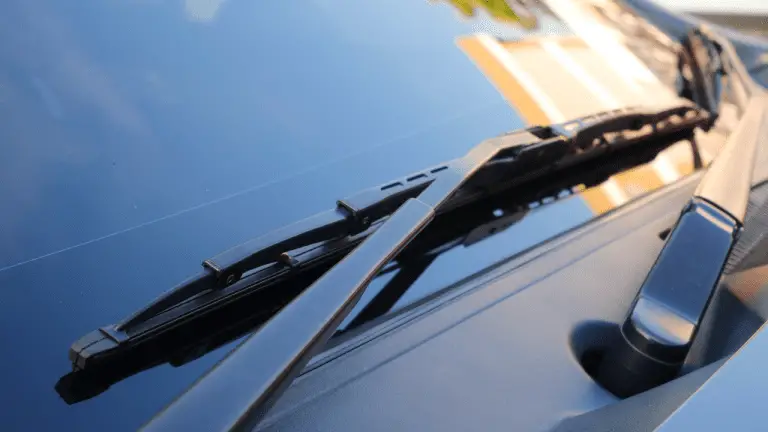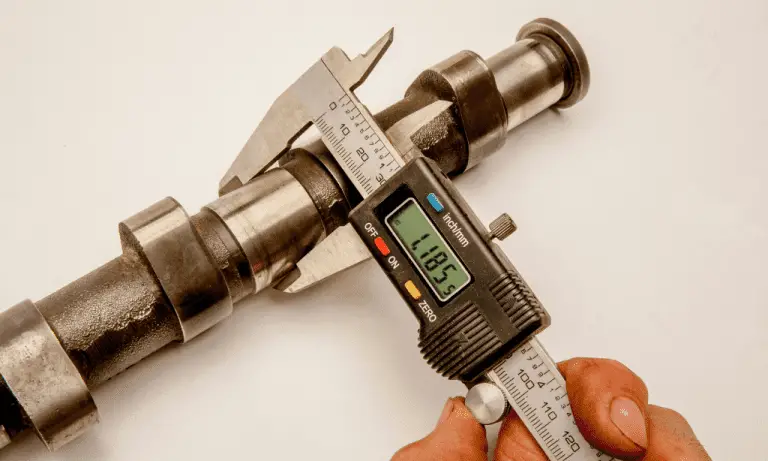How to Quickly Dry Wet Car Carpet [Simple and Effective Methods]
To dry wet car carpet effectively, use a wet/dry vacuum to extract as much moisture as possible. Then, use fans or open windows to promote airflow and speed up the drying process.
Assessing The Damage And Preparing For Drying
Water damage to your car’s carpet can be frustrating, but with the right methods, you can effectively dry it out and prevent further issues. Before you jump into the drying process, it’s important to assess the extent of the damage and prepare for the task ahead.
Determining The Extent Of Water Damage
To effectively dry your wet car carpet, it’s crucial to determine the extent of the water damage. Here are some key points to keep in mind:
- Inspect the affected area thoroughly to identify any signs of water saturation.
- Look for discoloration, dampness, or a musty odor, which indicate significant water damage.
- Check if the water has seeped into the car’s padding or reached the floor beneath the carpet.
- Assess the severity of the water damage to determine the necessary measures for drying.
Removing Any Items Or Obstacles From The Car Carpet Area
Before you start the drying process, it’s important to remove any items or obstacles from the car carpet area. Here’s what you need to do:
- Take out all personal belongings, such as floor mats, seat covers, and anything that came into contact with the wet carpet.
- Inspect the underside of the mats and remove any moisture or dirt to prevent mold growth.
- Clear out any debris, such as leaves or dirt, that might have accumulated on the carpet surface.
- Ensure that the car’s interior is free from any obstructions that might hinder the drying process.
Preparing Necessary Supplies For The Drying Process
Proper preparation is essential for effective drying. Here are the necessary supplies you’ll need before you begin:
- A wet and dry vacuum cleaner: This will help extract excess water from the carpet.
- Absorbent towels or microfiber cloths: These will assist in soaking up moisture from the carpet fibers.
- Fans or dehumidifiers: These appliances will aid in speeding up the drying process.
- Baking soda or an odor eliminator: These can be used to prevent or reduce any unpleasant odors that may develop.
- Plastic sheets or tarps: These will protect other areas of the car from getting wet during the drying process.
By following these steps, you’ll be well-equipped to tackle the drying process and restore your car’s carpet to its pre-water damage condition. Remember to assess the damage, clear out any items or obstacles, and gather all the necessary supplies before you begin.
Removing Excess Moisture From The Car Carpet
When faced with a wet car carpet, it’s crucial to take immediate action to prevent mold, mildew, and musty smells from taking hold. Here are some simple and effective methods to remove excess moisture and restore your car carpet to its dry and pristine state.
Blotting The Wet Areas With Absorbent Materials
One of the first steps to drying a wet car carpet is to blot the affected areas to remove as much moisture as possible. Here’s how:
- Start by using a clean, absorbent towel or cloth to blot the wet areas gently.
- Press down firmly to soak up the water, but avoid rubbing or scrubbing as this can spread the moisture and potentially damage the carpet fibers.
- Continue blotting until no more water is being absorbed by the towel.
Using A Wet/Dry Vacuum Cleaner To Extract Moisture
If there’s a significant amount of water on your car carpet, using a wet/dry vacuum cleaner can be highly effective in removing excess moisture. Follow these steps:
- Begin by choosing the appropriate attachment for your wet/dry vacuum cleaner. A wide nozzle or upholstery attachment is usually suitable for car carpets.
- Turn on the vacuum cleaner and start extracting the water by moving the attachment over the affected areas in a slow and controlled manner.
- Make sure to cover the entire carpet surface, including the edges and corners, as water can seep into these areas.
- Empty the vacuum’s collection tank frequently to prevent overflow.
- Repeat the process until no more water is being extracted.
Applying Pressure With Clean Towels Or Rags
To accelerate the drying process and further remove any remaining moisture, you can use clean towels or rags to apply pressure. Follow these steps:
- Start by folding clean towels or rags into flat squares or rectangles.
- Place them over the wet areas of the car carpet, making sure to cover the entire surface.
- Apply pressure by stepping or standing on the towels, allowing them to absorb as much moisture as possible.
- Replace the towels with dry ones once they become saturated, continuing the process until the carpet feels mostly dry to the touch.
Remember, it’s crucial to address wet car carpets promptly to avoid unpleasant odors and potential damage. By following these simple and effective methods, you can effectively remove excess moisture and restore your car carpet to its dry and fresh state.
Speeding Up The Drying Process
Drying a wet car carpet quickly is crucial to prevent the growth of mold and mildew, as well as to eliminate any unpleasant odors. To expedite the drying process, you can follow these effective methods:
Opening Car Windows And Doors To Improve Air Circulation
- Open all the windows and doors of your car to enhance air circulation inside. This will help in speeding up the evaporation process and reducing the moisture content in the car.
- Allow fresh air to flow freely through the car, as it helps in drying the wet carpet by carrying away the dampness.
- Secure the windows and doors in an open position using wedges or blocks to prevent them from closing accidentally, ensuring proper air circulation throughout the drying process.
Utilizing Fans Or Portable Air Blowers To Enhance Airflow
- Place fans strategically inside the car to boost airflow and expedite drying. Position them in such a way that they blow air directly onto the wet carpet.
- Set the fans to the highest speed setting for maximum air circulation. The moving air will help in evaporating the moisture from the carpet fibers.
- Use portable air blowers if you have them available. These devices generate strong, focused airflow, which can help in accelerating the drying process even further.
Employing Dehumidifiers To Reduce Humidity Levels Inside The Car
- Consider using a dehumidifier inside your car to lower the humidity levels. This can be especially useful if you live in a humid climate or if the weather conditions are not conducive to natural drying.
- Place the dehumidifier in a central location within the car to ensure even distribution of its drying effects.
- Ensure that you choose a dehumidifier that is suitable for the size of your car and has a sufficient capacity to extract moisture efficiently.
- Regularly check and empty the water collection container of the dehumidifier to ensure continuous operation.
Remember, the combination of opening the car windows and doors, using fans or air blowers, and employing dehumidifiers can significantly speed up the drying process and prevent any potential damage to your car’s interior.
Preventing Mold And Mildew Growth
Mold and mildew can quickly become a nuisance in your car if wet carpet is not properly addressed. To avoid the growth of these unwanted guests, follow these effective methods:
Treating The Carpet With A Homemade Or Commercial Anti-Mold Solution
- Mix equal parts white vinegar and water in a spray bottle.
- Liberally spray the affected areas and allow the solution to sit for about 10 minutes.
- Using a clean cloth or sponge, gently scrub the carpet to remove any dirt or mold.
- Rinse the area thoroughly with water and blot with a dry cloth.
- Alternatively, you can use a commercial anti-mold solution specifically designed for car interiors. Follow the instructions on the product for best results.
Applying Baking Soda To Absorb Any Remaining Moisture And Odors
- Sprinkle a generous amount of baking soda over the damp carpet surface.
- Gently work the baking soda into the fibers using a soft brush or your fingers.
- Allow the baking soda to sit for several hours or overnight to effectively absorb moisture and eliminate odors.
- Vacuum the area thoroughly to remove the baking soda residue.
- Repeat the process if necessary to ensure complete drying and odor removal.
Keeping The Car Interior Well-Ventilated And Dry After Cleaning
- Whenever possible, park your car in a well-ventilated area or in direct sunlight to facilitate drying.
- Roll down the windows slightly to allow air circulation.
- Use a dehumidifier or moisture absorber to reduce humidity inside the car.
- Avoid storing wet or damp items in the car as they can contribute to moisture buildup.
- Regularly check and clean the car’s air conditioning system to prevent condensation.
By following these simple and effective methods, you can prevent mold and mildew growth in your car’s wet carpet, keeping it fresh and odor-free. Remember to prioritize proper ventilation and drying to maintain a clean and healthy car interior.
Special Considerations For Leather Or Upholstered Car Seats
Taking care of your car’s interior includes properly handling wet car carpets, but what about leather or upholstered seats? These surfaces require special considerations to ensure they are not damaged in the drying process. Here are key points to keep in mind:
- Avoiding excess water saturation on leather and upholstered surfaces:
- Use a fabric or leather cleaner to gently remove excess moisture before beginning the drying process.
- Blot the seats with a clean, absorbent towel to absorb as much water as possible.
- Avoid applying excessive pressure or scrubbing vigorously to prevent potential damage to the surface.
- Using specific cleaning products suitable for leather or upholstery:
- It’s crucial to choose the right cleaning products formulated for leather or upholstery surfaces.
- Look for products that are ph-neutral and specifically designed to clean and protect leather or fabric materials.
- Follow the instructions provided by the manufacturer to ensure safe and effective cleaning.
- Conditioning and moisturizing leather seats after drying:
- Once the seats are dry, it’s important to restore moisture and prevent cracking by conditioning the leather.
- Apply a good-quality leather conditioner using a soft cloth or applicator pad, following the manufacturer’s instructions.
- Massage the conditioner gently into the leather to ensure even coverage and absorption.
Taking these special considerations into account will help you safely dry wet car carpets while preserving the integrity of your leather or upholstered seats. By choosing suitable cleaning products and properly conditioning the seats, you can maintain their luxurious appearance and extend their lifespan.
Professional Assistance And Tips For Massive Water Damage
Recognizing When To Seek Professional Help For Severe Water Damage
If you find yourself in a situation where your car’s carpet has been heavily soaked or flooded, it’s important to recognize the signs that indicate you need professional assistance. While minor dampness can often be managed with diy methods, severe water damage requires the expertise of professionals who are equipped to handle extensive restoration.
Here are some key points to consider when deciding whether to seek professional help for massive water damage:
- Water accumulation: If you notice standing water or excessive soaking in your car’s carpet, it indicates a significant amount of water has seeped in. This level of saturation requires professional intervention to prevent further damage and potential mold growth.
- Lingering odors: Even after thoroughly drying your car’s carpet, if you still detect musty or unpleasant odors, it may indicate water has penetrated deep into the padding or insulation. Professionals can identify the source of these odors and treat them appropriately.
- Electrical issues: Water damage can disrupt the electrical system of your car, leading to malfunctioning components or even short circuits. Seeking professional help is crucial in such cases to ensure the safety and proper functioning of your vehicle.
Trusting Professionals To Thoroughly Clean And Restore Your Car’S Carpet
When facing massive water damage to your car’s carpet, it’s essential to trust professionals to handle the cleaning and restoration process. Here are the reasons why relying on experts is the best course of action:
- Experience and expertise: Professional technicians have extensive experience dealing with water damage and are equipped with the necessary knowledge and tools to effectively clean and restore your car’s carpet. They can identify hidden pockets of moisture and ensure a thorough cleaning process.
- Proper equipment: Professionals utilize specialized equipment such as powerful extraction machines and industrial-grade dryers to expedite the drying process. These tools optimize the restoration process, minimizing the risk of mold growth and other long-term issues.
- Professional-grade cleaning products: Using professional-grade cleaning products, experts can effectively eliminate stains, odors, and bacteria from your car’s carpet. Their expertise ensures the right products are used without causing any damage to the carpet fibers or upholstery.
- Time-saving: Professional assistance saves you time and effort that would otherwise be spent on removing water, drying, and cleaning. With their expertise, professionals can efficiently restore your car’s carpet, allowing you to get back on the road sooner.
Following Expert Advice To Prevent Future Water Damage Incidents
Prevention is always better than cure, and the same applies to water damage in your car. By following expert advice and taking precautionary measures, you can minimize the risk of future incidents. Consider these tips to prevent water damage in your car:
- Regular maintenance: Keep your car well-maintained, ensuring that there are no leaks or damaged seals that may allow water to enter. Regularly inspect your vehicle’s weather stripping, sunroof, windows, and door seals to ensure they are in good condition.
- Proper drainage: Ensure that your car’s drainage system is functioning correctly. Keep the sunroof drains, windows, and other drainage points clear from debris that could obstruct water flow.
- Weather protection: Park your vehicle in a covered area or use a car cover during heavy rainfall or snowfall to prevent direct exposure to moisture.
- Prompt action: If you do experience minor water damage, address it promptly by thoroughly drying the affected area as soon as possible. This helps mitigate the risk of further damage and mold growth.
By taking these preventive measures and seeking professional help when needed, you can effectively manage and mitigate the impact of water damage on your car’s carpet. Remember, prevention and timely intervention are essential in preserving the longevity and condition of your vehicle.
Wrapping Up And Preventing Future Mishaps
Having followed the previous steps on how to dry wet car carpets effectively, it’s important to wrap up the process and take preventive measures to avoid future accidents or spills. By following these additional tips and implementing regular cleaning and maintenance practices, you can uphold the longevity of your car’s carpet.
Summary Of The Steps To Quickly Drying Wet Car Carpets
To quickly dry wet car carpets, you can take the following steps:
- Start by removing any excess moisture from the carpet using a wet/dry vacuum or absorbent towels.
- Use a fan or open the car windows to improve air circulation and speed up the drying process.
- Apply a carpet cleaning solution specifically designed for wet carpets to remove any stains or odor.
- Allow the carpet to air dry completely by keeping the car parked in a well-ventilated area.
- Once dry, use a carpet deodorizer or fabric freshener to eliminate any lingering smells.
Additional Tips For Preventing Future Accidents Or Spills
To prevent future mishaps and avoid the hassle of dealing with wet car carpets, consider the following tips:
- Use a waterproof or rubberized car mat to protect the carpet from spills or wet shoes.
- Encourage passengers to refrain from eating or drinking inside the car to minimize the risk of spills.
- Keep a small portable hand vacuum or absorbent towels handy for quick cleanup of any minor spills or accidents.
- Regularly inspect the car’s windows, doors, or sunroof for any leaks or signs of water ingress.
- Be mindful of the weather conditions and take extra precautions during rainy or snowy seasons.
Importance Of Regular Cleaning And Maintenance To Uphold Carpet Longevity
Regular cleaning and maintenance are vital to ensure the longevity of your car’s carpet. Here’s why:
- Cleaning the carpet regularly removes dirt, debris, and stains that can accumulate over time and cause damage.
- Regular vacuuming helps prevent the buildup of dust particles and allergens that can adversely affect air quality inside the car.
- Promptly addressing spills and accidents prevents them from seeping deep into the fibers and causing long-term damage.
- Regular maintenance, such as shampooing or steam cleaning, can rejuvenate the carpet’s appearance and extend its lifespan.
- Upholding the cleanliness and condition of the carpet contributes to the overall aesthetic appeal and resale value of the car.
By diligently following the steps to dry wet car carpets and taking preventive measures, you can maintain a clean and dry interior, ensuring the comfort and longevity of your car’s carpeted flooring. Remember, prevention is key to avoiding the hassle and expense of dealing with wet carpets in the future.
Conclusion
Drying wet car carpet is a task that should not be delayed or taken lightly. Understanding the causes of wetness and using the right techniques can help prevent further damage and restore your car’s interior to its former glory. Whether you opt for the blotting method, the vacuuming method, or utilizing moisture-absorbing products, be sure to act promptly to avoid mold and odor formation.
Additionally, maintaining proper ventilation and addressing leaks or water ingress in your vehicle will go a long way in keeping your car carpet dry. Remember to regularly inspect your vehicle for signs of dampness and take appropriate action to ensure a clean and dry environment.
By following these simple and effective methods, you can safeguard your car’s interior and enjoy a comfortable ride for years to come.
- Why Are My Car Headlights Not Bright Enough? - May 9, 2024
- How Long Can You Drive With An EVAP Leak? - May 9, 2024
- What Does B Stand for in a Car? [Full Guide] - May 9, 2024







![What Size Are License Plate Screws? [Choose the Right Size]](https://automhelp.com/wp-content/uploads/2023/06/License-Plate-Screw-Size-768x462.jpg)